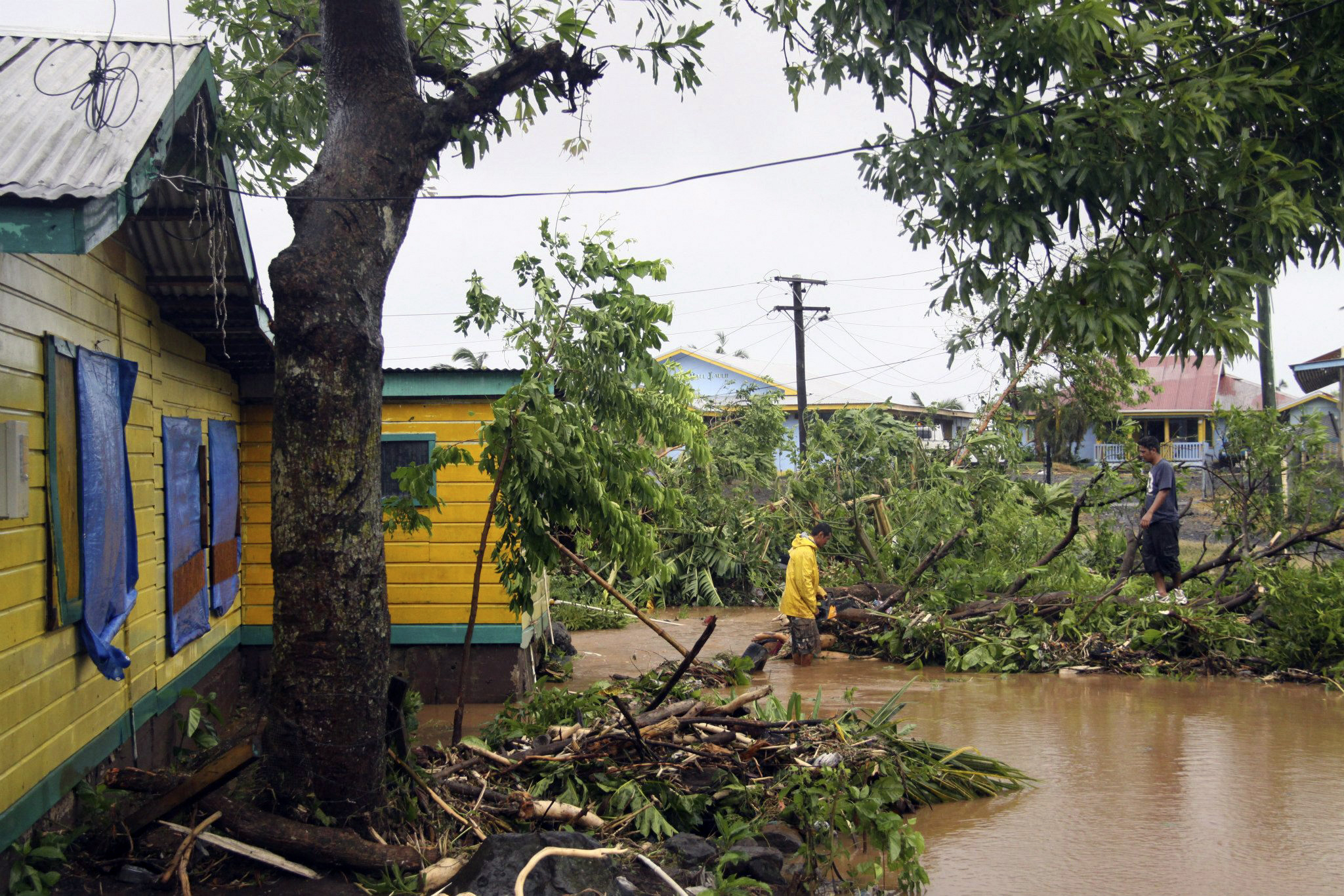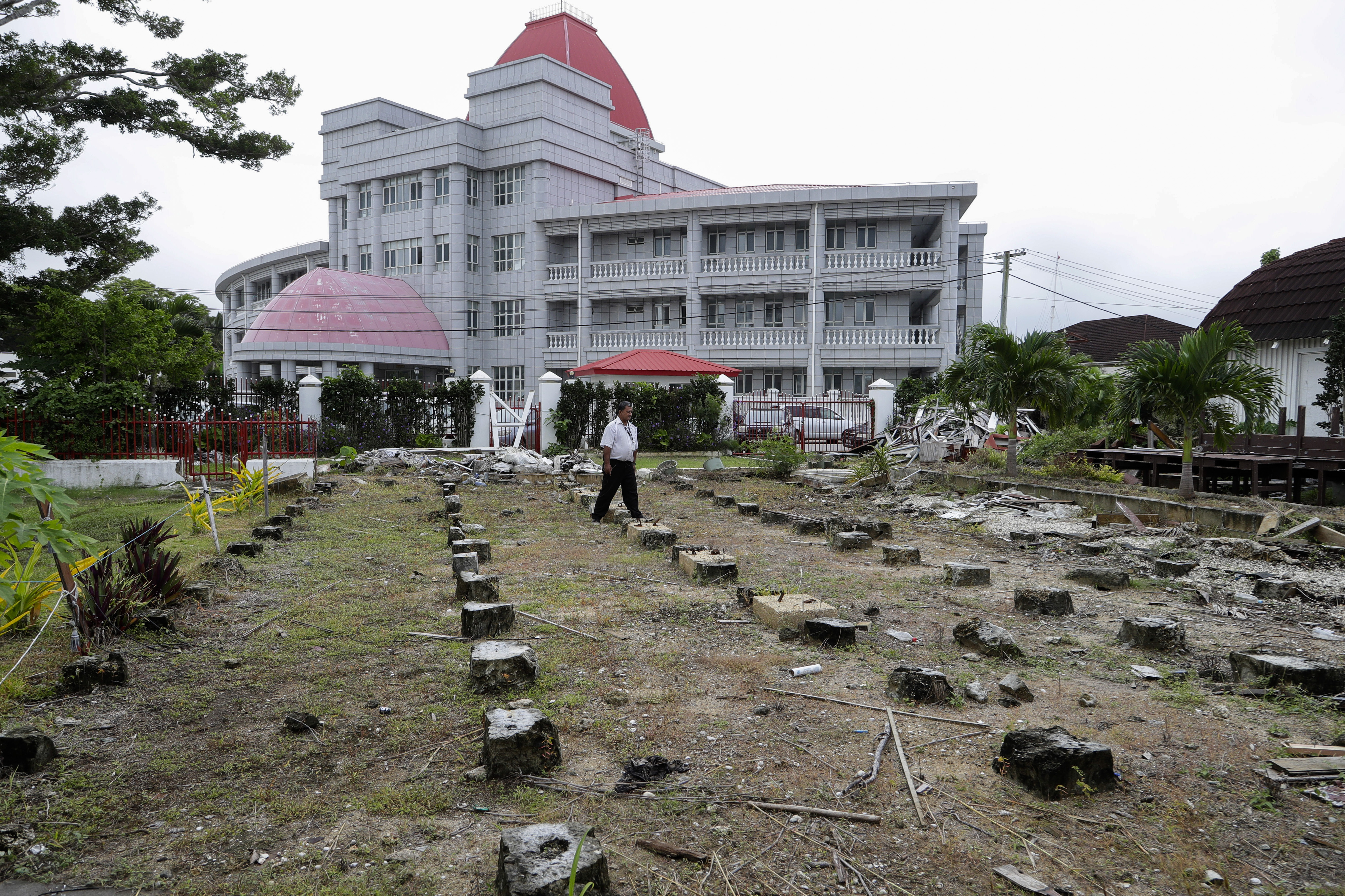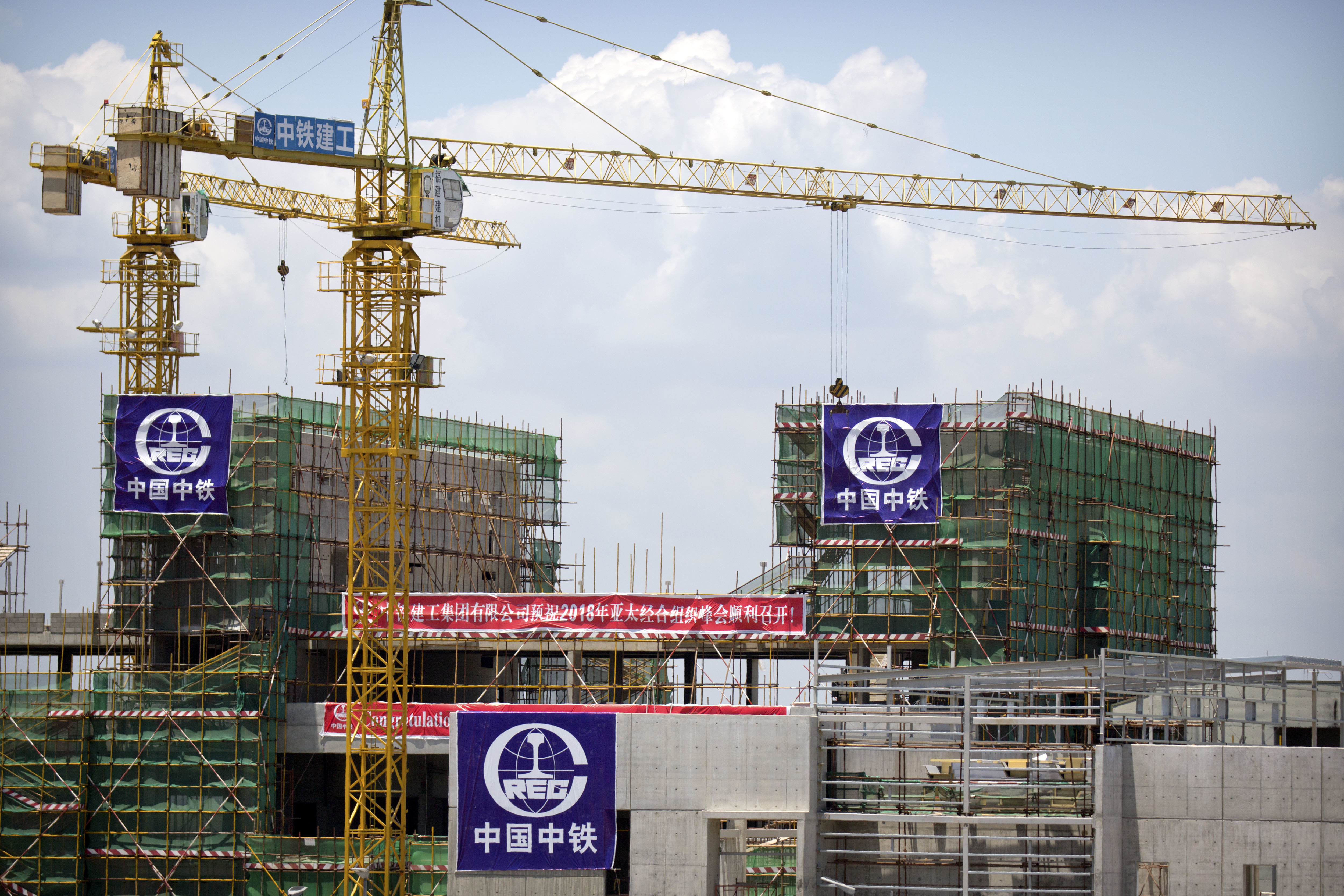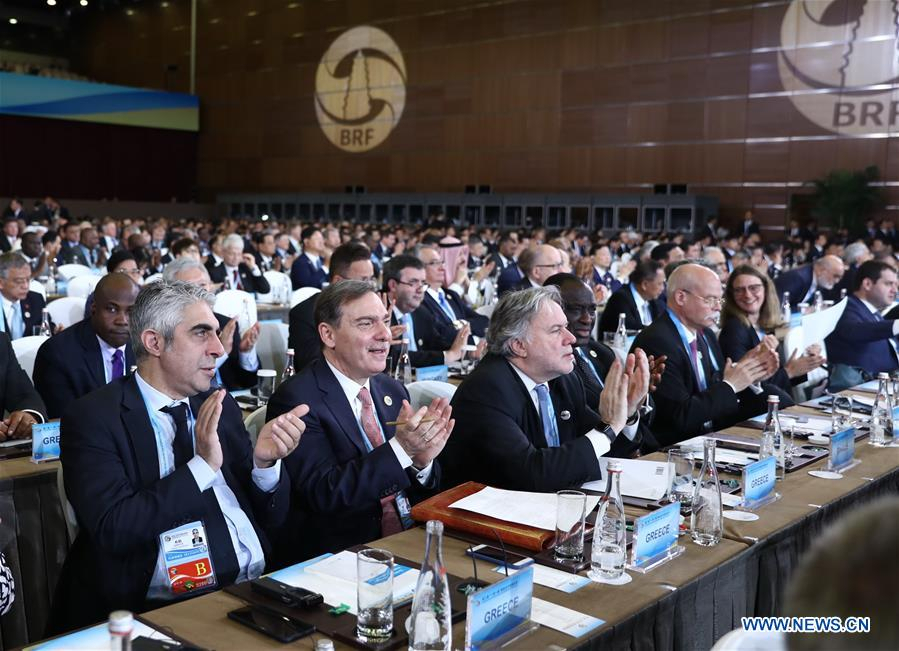With snow white sandy beaches and startlingly blue water teeming with coral and fish, Pacific island countries are often considered to be paradise on earth. But with climate change and the related rise in sea levels looming, the existence of many such islands are under threat.
Rising sea levels are encroaching on land, while climate change-triggered disasters like floods and tropical cyclones have brought devastation to local communities. Compounding climate concerns are development issues, such as a lack of quality infrastructure, that are hindering the Pacific island nations from further growth.
"Island countries in the South Pacific are of small land area and population, which makes it hard for them to achieve economy of scale," said Chen Xiaochen, director of the International Studies Department at Chongyang Institute for Financial Studies at Renmin University of China in Beijing. Due to resource constraints and a national economic structure overly reliant on a few industries, these countries are highly dependent on foreign aid, he added.
Changing where financial assistance comes from
Traditionally, aid from Australia dwarfs that from any other country in the region. Between 2011 to 2017, the Australian government provided at least 6.5 billion dollars of aid to countries across the South Pacific, more than five times that of the second largest aid donor, China, according to a research report published by Lowy Institute, a think tank based in Australia.

A man wades through deep water in Samoa's capital Apia after Cyclone Evan tore through the country, December 14, 2012. /AP Photo
A man wades through deep water in Samoa's capital Apia after Cyclone Evan tore through the country, December 14, 2012. /AP Photo
But aid provided by Australia fails to address the real need of Pacific island countries, according to Wang, because they do not have enough say over how the money is used. By way of example, for countries most vulnerable to climate change, a flood wall maybe of more importance than other larger scale infrastructure — a specific need that only the locals are aware of.
When Tonga's historic Parliament House was destroyed by Cyclone Gita last year, the archipelago found itself in need of help to fund its reconstruction projects. In Fiji, an entire village had to be relocated due to rising sea levels. Leaders from Pacific island countries have been appealed to nations around the world to curb carbon emissions in a bid to halt encroaching sea water.
"Pacific leaders are pursuing an independent way of development, with them now having more say on the issues of climate change and marine governance on the global stage. Amid the rise of a new generation of Pacific leaders, China's Belt and Road Initiative (BRI) is coming to the Pacific," said Guo Chunmei, associate research fellow at the China Institutes of Contemporary International Relations.
A growing number of Pacific island countries have signed formal BRI agreements with China, including the Cook Islands, Fiji, Papua New Guinea and Tonga.

A security guard walks amongst the ruins of Tonga's historic Parliament House, destroyed last year in Cyclone Gita, April 10, 2019. /AP Photo
A security guard walks amongst the ruins of Tonga's historic Parliament House, destroyed last year in Cyclone Gita, April 10, 2019. /AP Photo
The myth of debt-trap diplomacy
China's increased aid and development presence in the Pacific have fueled speculations that it is engaged in debt trap diplomacy — splashing out billions of dollars in attractive loans to developing countries in exchange for political concessions from the recipients.
"If you look at the countries that receive the highest amount of aid and assistance from China, they are not most at risk of debt problems," said Chen Xiaochen from the Chongyang Institute for Financial Studies at Renmin University of China.
The research report from the Lowy Institute finds that 90 percent of China's bilateral loans have gone to countries that International Monetary Fund debt ratings indicate could sustainably absorb such debt. For low income countries most at risk of debt problems, the majority of new loans have come from sources other than China such as multilateral institutions like the World Bank and regional development banks.
Aid from China is used to build up connectivity in the Pacific island countries to achieve economy of scale, help with disaster reconstruction efforts, build clean energy facilities and even sports facilities. Table tennis, the sports activity most popular in China, is gaining traction in Pacific island countries thanks to infrastructure built with Chinese aid.

Cranes rise above a building built by the Chinese state-owned construction firm China Railway Group Limited at Port Moresby, Papua New Guinea. /AP Photo
Cranes rise above a building built by the Chinese state-owned construction firm China Railway Group Limited at Port Moresby, Papua New Guinea. /AP Photo
The new geopolitical battlefield?
The BRI's foray into the Pacific is often painted as China's attempt to expand its power in the region. In his first detailed foreign policy speech since he came into power, Australian Prime Minister Scott Morrison said that the Pacific "is our patch" and vowed to offer up to 2.18 billion dollars loans and grants to countries in the South Pacific.
"Australia and New Zealand are important partners to China, and thus we cannot develop the China-Pacific relations at the expense of China-Australia relations or China-New Zealand relations," said Guo Chunmei from the China Institutes of Contemporary International Relations. China needs to explore a trilateral cooperation model with Australia or New Zealand in conjunction with cooperation with Pacific island countries, she added.
The first trilateral cooperation attempt between China, New Zealand and the Cook Islands to build a water project for the islands has shown that the region can be ruled by partnership and consensus rather than competition and contestation.
Before the project, plagued by aging infrastructure, people on the Cook Islands could only find an intermittent supply of water in dry weather, while those living in remote areas were sometimes denied adequate water due to low pressure. A trilateral partnership between the three countries was announced in 2012, with China providing concessional loans and New Zealand offering a grant to upgrade the island's water network.

Dignitaries during the opening ceremony of the second Belt and Road Forum for International Cooperation at the China National Convention Center, Beijing, April 26, 2019. /Xinhua Photo
Dignitaries during the opening ceremony of the second Belt and Road Forum for International Cooperation at the China National Convention Center, Beijing, April 26, 2019. /Xinhua Photo
There are many concrete ways in which China can collaborate with Pacific island countries, said a report recently published by the Chongyang Institute for Financial Studies of Renmin University of China on the opportunities and challenges brought by the BRI in the Pacific. China could help Pacific island countries build infrastructure that could counter climate change threats, absorb carbon emissions and even establish a fully-fledged carbon emission trading market in the Pacific in the future, according to the report.
"Multilateralism is an important pathway to achieving a blue economy and green development," the report writes.
It is important to realize that the BRI can make a solid effort to improve the living conditions of individuals, said Zhou Rong, senior researcher at the Chongyang Institute for Financial Studies of Renmin University of China. China's engagement with Pacific island countries shows that the BRI is not an elusive idea, but a series of concrete policy proposals that can improve people's lives in a tangible way.